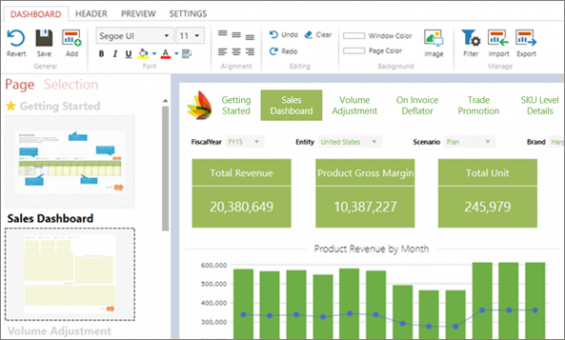Read Time: 4 minutes

The Current Environment
Over the past 20 years, large and small businesses alike have transformed the ways in which they handle their financial reporting and analysis. Whereas before these organizations used single-user paradigms for their financial reporting software — Excel being the most popular — now they are utilizing more information-centric multi-user solutions (OLAP). As a result, finance departments are noticing a shift to a more consolidated and auditable way of overseeing their financial reporting and analysis.
As the demands of internal and external reporting have increased, the clear champions of these reporting and analysis software solutions were the ones that definitively transferred the financial reporting and analysis to the finance professionals. The best reporting and analysis software solutions were business-managed and meant that finance professionals could easily convert their Excel skills to OLAP intelligence and manage the process on their own, with very little need for IT department input.
Opportunities
Within the realm of financial reporting software, there is an unmistakable opportunity for some sharing of the powerful technology that companies are investing in. After all, these OLAP technologies are proficient enough to do more complex tasks than merely monthly budget collections and forecast reporting. When employed properly, the most capable OLAP solutions will be able to model your operations in detail; for example, by taking the detail level down to the SKU, product, service, employee, color, size or day and by analyzing your company’s most unstable P&L lines. By combining your finance and operations together, these reporting and analysis software solutions allow you the opportunity to react to future trends before it is too late.
Operations
I have previously discussed the value of detailed operational planning, as creating a comprehensive operational plan can be a rather daunting task for business owners who are already spending a lot of precious time and energy focusing on the final profit and loss (P&L), balance sheet and cash flow statement. When thinking about budgeting and planning, these things tend to receive more attention, while operational planning has typically been lower on most companies’ priority list.
The purpose of operational planning is to outline, in detail, your business’s operation and future growth projections in order to achieve tactical objectives. For this reason, operational departments have very different needs. Their goal is to understand “why” certain trends in product profitability, customer loyalty or other metrics are occurring. They aim to create a detailed plan for your company’s resources, product stock and employees.
Let’s put it this way. If I were to ask you right now why one of your company’s products or stores or services is more profitable or efficient than another, would you be able to answer it? Would you then be able to devise a quick and effective plan?
This is the purpose of a robust detailed operational plan.
Challenges
Combining operational planning with financial planning into one reporting and analysis software does not come without some inherent difficulties.
- Gathering Financial Data — Due to the fact that financial reporting and analysis has historically been compiled and interpreted by the finance department, it is likely that this data is detached from the other departments. Embracing buy-in from the operations and IT departments will be an essential starting step. For this reason, you might want to look into implementing a cross-functional Center of Excellence approach that supports all the relevant Analytics in your business.
- The Overall Data Challenge — When the efforts around incorporating operational data into a budgeting and planning process reside primarily in spreadsheets, the process itself becomes exceptionally difficult. The level of detail inherent in the operating data (i.e. daily, weekly, location, customer) will be larger in magnitude and complexity than the financial data. However, once cleaned up and imported into the correct, capable system, it will be worth it!
- Updating Your Software Tools — If your company hasn’t recently updated its financial reporting software then it might not be at a standard that can proficiently cope with these extra demands and users. Your financial analytics solution must be able to maintain various “dimensions” for financial reporting and analysis and support a dramatic increase in users, data attributes, multiple hierarchies and more.
Solutions
If your company is looking to extend its financial reporting and analysis into Operational Analytics then it is important to choose a solution that offers the best ROI. Kepion provides a financial reporting and analysis platform that can be leveraged by any business user with no special skills or programming experience. Combining an intuitive point-and-click report-building process with a centralized database and OLAP built within Kepion Modeler, Kepion’s solution makes it easy to create, bundle and share reports with your intended audience. Interested in learning more? Try a demo of Kepion today.